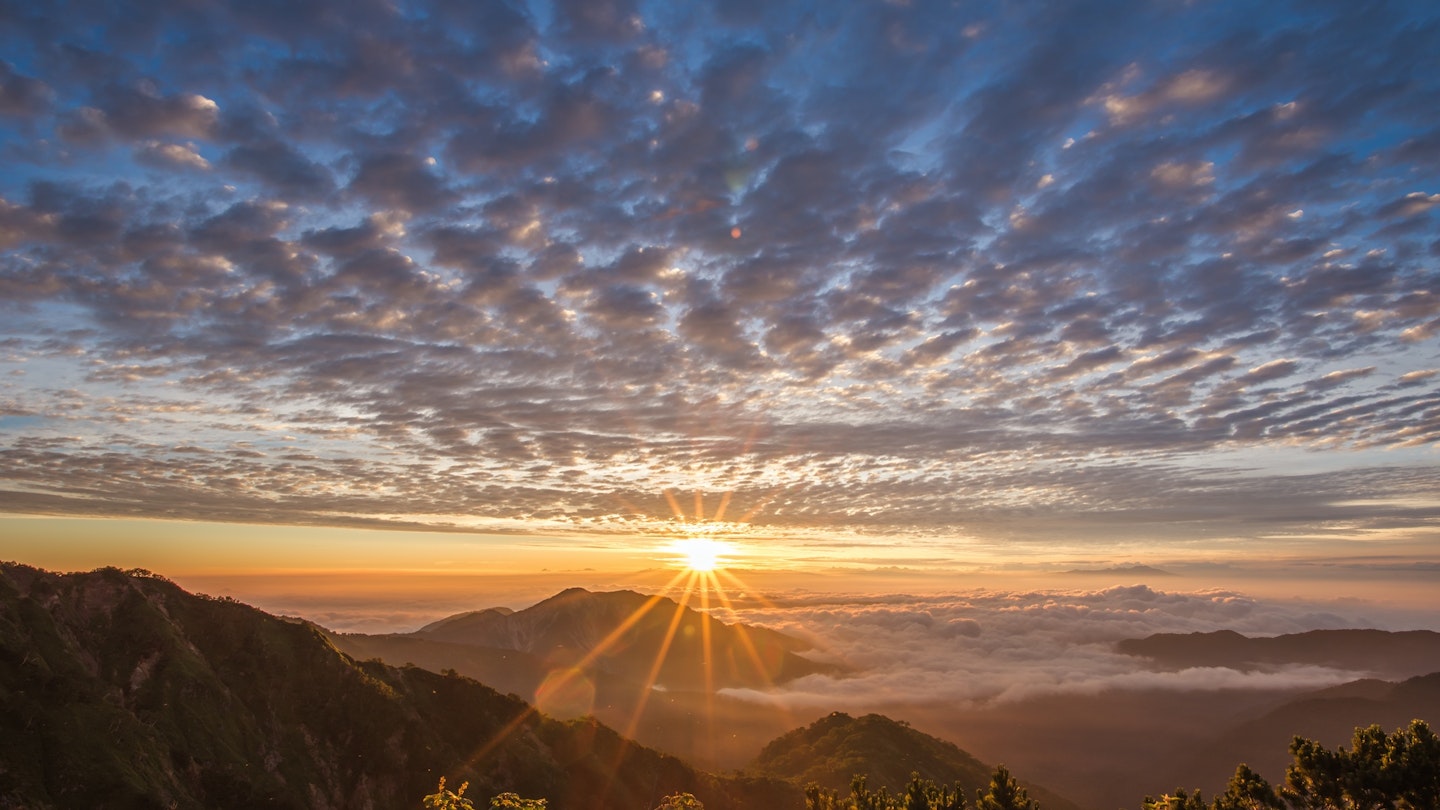Discover the Majestic Trails of Japan: Exploring Gifu and Ishikawa
Rising more than 8,900 feet above sea level, the mountains surging up from the northern shore of central Honshū, the largest island in the Japanese archipelago, have captivated adventurers and worshippers for centuries.
Mount Hakusan, the tallest mountain in the area, can be seen from four prefectures and is one of Japan’s three holy peaks, cherished in Japanese tradition. Since the time of Taichō Daishi, a mountain monk who made the first pilgrimage to these mountains in 717 CE, numerous monks have trekked similar ascetic journeys to meditate on its summit. As the routes gained popularity, a network of sacred pilgrimage trails developed to guide individuals to mountain shrines.
Today, visitors still frequent these shrines to honor the gods or request bountiful harvests. However, these pilgrimage trails are increasingly sought after by hikers and mountaineers, looking for fresh, clean air and a retreat from urban life. This article highlights trails through two prefectures—Gifu and Ishikawa—and provides insights for summiting Hakusan.
Gifu Hiking
Before tackling the revered holy mountain, consider warming up on a smaller trek. Start your adventure at a trailhead just north of Shiramizu Lake in Gifu Prefecture, where a short 2-mile hike allows you to summit Mt. Okura with a gain of approximately 2,624 feet in altitude.
As you journey through the old-growth beech forest, watch for unique wildlife such as the Japanese macaque—renowned globally for their fondness of hot springs—and the Japanese serow, a rare goat-antelope species and a national symbol of Japan. Above the tree line, beautiful glacial lakes scatter the landscape, creating a picturesque setting.
For a different mountain experience, ascend Mt. Kinka, towering above Gifu city, which offers ten distinct hiking routes to the summit. Many trails begin from Gifu Koen, just a 15-minute bus ride from the train station. The Hyaku Magari and Uma no Se trails are for those seeking a challenge, but heed the warning at the trailheads that they require strong legs and hearts. The Uma no Se route climbs directly up the mountain, while more relaxed hikers might prefer the Meiso no Komichi or Nana Magari trails.
At the summit, a concrete replica of Gifu Castle, built in 1956, awaits visitors—a testament to the feudal era, though the original ruins were damaged during WWII. For those not wishing to trek back down, a cable car offers a swift ride to the base in about four minutes.
In addition to hiking, do not overlook Gifu Prefecture’s historic thatched gasshō-zukuri farmhouses in Shirakawa-go villages, a unique architectural style that merits exploration.
Exploring Hakusan
Mount Hakusan dominates the landscape of central Japan, as well as the imaginations of travelers across centuries. Being the highest mountain in the region, it retains snow longer than its neighbors, earning its name—Hakusan translates to ‘white mountain’ in Japanese.
Hakusan National Park spans an impressive 184 square miles, characterized by mountain meadows, forests, rocky formations, cascading waterfalls, and windswept hilltops, promising breathtaking panoramic views of Ishikawa, Gifu, Fukui, and Toyama prefectures.
Above the tree line, a variety of rare flowers can be discovered. The chocolate lily, the official flower of Ishikawa Prefecture, blooms in spring and summer and is easily identified by its stunning, chocolate brown blossoms flecked with yellow—though it is known for an unpleasant odor and is also called the ‘outhouse lily’.
There are ten primary trails leading to the summit, open from July to October. The most popular trek departs from the town of Bettōdeai, accessible via a two-hour bus ride from Kanazawa, with a hike to the summit taking approximately four to five hours.
Hikers can find two mountain lodges accommodating hundreds. Nanryū Sansō is situated a three-and-a-half-hour hike from Bettōdeai, while the Hakusan Murodō visitor’s center is an additional hour up the trail. The trekking time from the Gifu Hirasedo trailhead to Murodō lodge typically takes just over four hours. Both lodges offer tatami mats and two hot meals nightly, costing around ¥9,300 ($85 USD). The Nanryū Sansō also features a camping area.
For those equipped with sleeping and cooking gear, the Minami Ryugabamba cabins are available just down the trail from Nanryū Sansō. These lodges operate during the hiking season from July to September, with reservations necessary, particularly on weekends.

Ishikawa Hiking
Southwest of Hakusan, a loop trail begins at the Hakusan Ichirino hot springs ski resort area. Over an 11.3-mile trek, hikers gain and lose 6,500 feet of altitude, rendering this hike notably challenging.
The hike offers stunning views of the hot spring village, against a backdrop of forested slopes. The steep ascent takes you through lush vegetation and lingering snow patches into the late spring. This four-and-a-half-hour hike can be accomplished as a day trip from the coastal city of Kanazawa.
Kanazawa, a vibrant and accessible capital, boasts immaculately preserved Geisha and Samurai districts. Strolling through these areas, with their quaint wooden storefronts, allows for a gradual re-entry into urban life. Additionally, the delightful offerings at the impressive Ōmichō fish market are a must-try.
If you’re in need of relaxation after an adventurous day in the mountains, consider the famed hot spring towns of Kaga Onsen, known for their therapeutic waters. Before indulging in a soothing soak, enjoy a leisurely walk along the Kakusenkei Gorge, located near Yamanaka village. The path, either paved or compact dirt, offers spectacular views of two bridges; the modern Ayatori-hashi (Cat’s Cradle Bridge) and the traditional wooden Korogi-bashi (Cricket Bridge).
Wrap up your day with a serene seasonal kaiseki dinner (Japanese haute cuisine) at a luxurious ryokan (traditional Japanese inn).
The 17th-century haiku poet Bashō beautifully celebrated the region’s healing waters, poetically expressing, “Who needs the dew of youth from the chrysanthemum when / You have the restoring waters of / Yamanaka?” His words ring true, reflecting the enchanting ambiance of this region.





